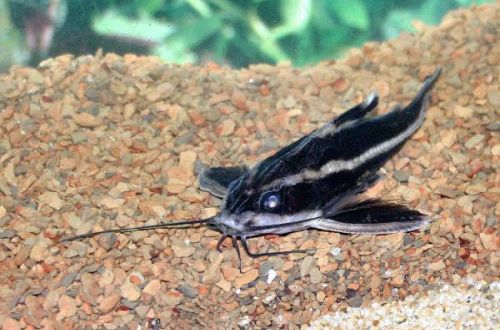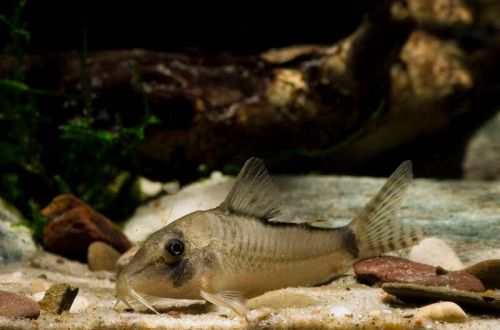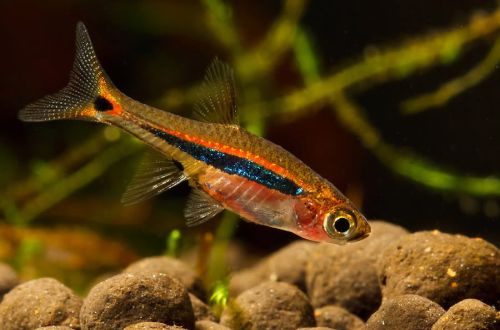
chocolate catfish
The chocolate catfish, scientific name Platydoras costatus, belongs to the family Doradidae, also known as striped Raphael catfish, striped Platydoras or spiny platydoras. This species is one of the most popular among aquarium enthusiasts, highly valued for its friendly nature despite being a carnivore.

Habitat
The striped platydoras is found in the Amazon and Orinoco river basins, mainly in the soft mouths of the numerous tributaries of these large rivers. Catfish like to hide at the bottom or in thickets of plants. In their natural habitat, they feed on mollusks, crustaceans and plant remains – fallen leaves, fruits, etc.
Description
Platidoras has wide white and black stripes throughout the body, stretching from head to tail, similar stripes are also present on the fins. The pelvic fins are larger than the caudal fins; during the movement of the fish they are straightened, like the wings of an airplane. Near the mouth are sensitive antennae with many receptors that help the catfish to search for prey. The catfish has an effective defense against larger predators – small curved spikes that dot the entire body of the fish.
Despite the fact that the catfish is nocturnal, it can often be seen during the daytime freely moving around the aquarium.
Food
Catfish should be provided with a sufficient amount of protein food, in a home aquarium it is permissible to feed bloodworms, earthworms, tubules or frozen food. As an additive, you can use industrial dry food – tablets, granules, flakes.
Food should be fed daily before turning off the lights in the aquarium, preferably in the morning and evening. In no case do not overfeed the fish, it does not have a feeling of fullness, from which they often die from a ruptured stomach.
Maintenance and care
The fish lives in the bottom layer, so for it there is a threat of poisoning with ammonia compounds from decaying organic residues. It is recommended to clean the soil from debris every two weeks with a siphon, this will also allow you to renew part of the water.
The fish needs a spacious aquarium with a volume of at least 280 liters with numerous shelters at the bottom in the form of snags, grottoes, as well as thickets of plants with hard leaves and a strong root system. The substrate should be prepared from coarse sand or small smooth pebbles so that the catfish cannot be injured when it burrows into the ground.
Fish should be transported in plastic or glass containers due to the presence of sharp spikes, the bags will quickly perforate. When servicing the aquarium, it is recommended to wear gloves, an accidental stab with thorns can be very painful.
Social behavior
Chocolate catfish is friendly to most species of fish, with the exception of very small ones, whose size does not exceed 3-4 cm, they can potentially become prey. The presence of protection allows you to keep together with aggressive species, such as some cichlids.





